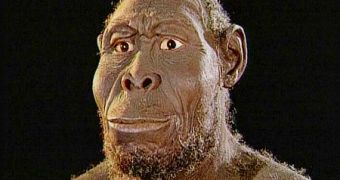How did the humans become humans?
Were the first humans more ape-like or human-like?
Dr. Timothy Bromage, a paleoanthropologist and Adjunct Professor of Biomaterials and of Basic Science and Craniofacial Biology at New York University College of Dentistry Modern, found that our earliest known close ancestor was much more ape-like than previously thought.
He made a computer-generated reconstruction revealing that a 1.9 million-year-old skull of Homo rudolfensis, the earliest member of the Homo genus had a surprisingly small brain and distinctly protruding jaw, ape-like traits more linked to older members of the hominid family living 3 million years ago.
The investigation questions how much H. rudolfensis differed from earlier, more ape-like hominid species.
Bromange is the first scientist to produce a reconstruction of the skull that contradicts the famous paleontologist and archaeologist Richard Leakey's depiction of H. rudolfensis as displaying a vertical facial profile and a relatively large brain, a view commonly accepted until now.
The brain of H. rudolfensis was found to represent 40 % of the brain of modern humans, slightly larger than a chimp's.
Bromage's research points out the fact that humans acquired a large brain and vertical face missing a pronounced jaw and large teeth at least 300,000 years later than previously thought, at most as recently as 1.6 million to one million years ago, when two more evolved species, H. ergaster and H. erectus, existed.
The fragmented skull of H. rudolfensis was discovered in Kenya in 1972 by Dr. Leakey, who dated it at about 3 million years of age, while later revisions corrected this to 1.9 million years. "Dr. Leakey produced a biased reconstruction based on erroneous preconceived expectations of early human appearance that violated principles of craniofacial development," said Dr. Bromage.
The new reconstruction of H. rudolfensis reveals it to be more like those of two archaic, ape-like hominids, Australopithecus and early Paranthropus, living at least 3 - 2.5 million years ago.
Bromage respected in his reconstruction the growth principles holding that the eyes, ears, and mouth are in precise relationship to one another in all mammals. "Because he did not employ such principles, Dr. Leakey produced a reconstruction that could not have existed in real life," Bromage concluded.

 14 DAY TRIAL //
14 DAY TRIAL //